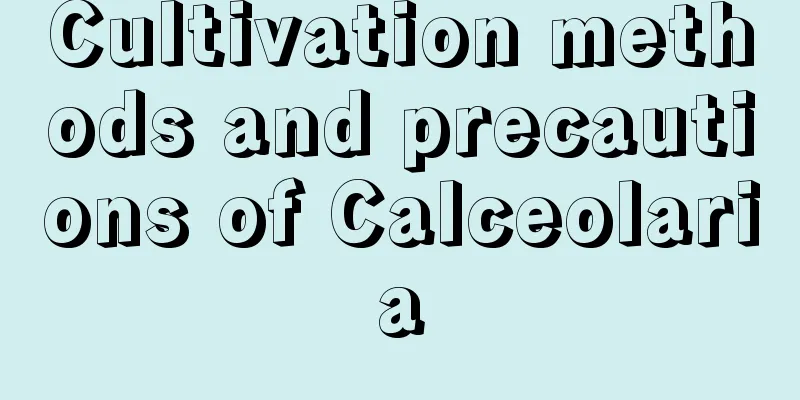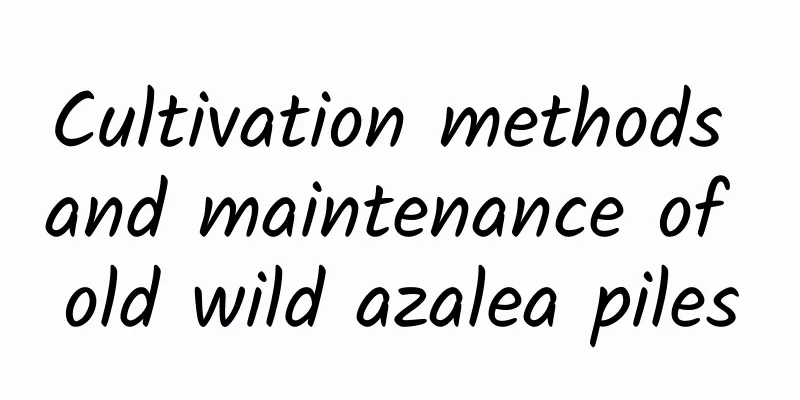Cultivation methods and precautions of Calceolaria

Farming methodsSowing methodCalceolaria is generally propagated by sowing, with a small amount of cuttings. Sowing is usually done in late August and early September, when the climate is getting cooler. The culture soil is made of 6 parts of leaf mold and 4 parts of river sand. It is directly sown in a "shallow pot" or "seedling shallow pot" without covering it with soil. Water is supplied by the "bottom of the pot immersion method". After sowing, cover it with glass or plastic cloth to seal it. Maintain 13~15℃, and seedlings will emerge after a week. After the seedlings emerge, remove the glass and plastic sheets in time to facilitate ventilation and prevent the occurrence of fall disease. Gradually expose the seedlings to light to allow them to grow healthily, and keep the room temperature below 20°C. When the seedlings have 2 true leaves, they should be transplanted into pots. Ventilation and shadingThe calendula likes cool weather and the suitable temperature for its growth is around 10℃. If the stems and leaves develop luxuriantly during the growing period, but the humidity in the potting soil is too high and it is stuffy, the stems and leaves of the plant will rot. In order to reduce the temperature, shading measures are often taken at noon to create a ventilated and cool environment. Especially after flowering in spring and when the seeds mature in May and June, it is important to do a good job of ventilation and provide shade at noon to facilitate the development and maturation of the seeds. Watering and fertilizingCalceolaria prefers a warm and humid environment, but avoids too wet soil in the pot and excessive watering during flowering. Generally, it is watered only when the soil in the pot is dry. If it is in a greenhouse, it is better to spray water frequently to increase the air humidity. When watering, do not water the plants directly. If water accumulates on the leaves and buds, it will easily cause rot. During the growing season before flowering, apply decomposed cake fertilizer water (diluted 10 times) once every 10 days. During the initial flowering period, apply additional phosphorus-based fertilizers. When applying fertilizers, do not allow the fertilizer water to contaminate the leaves to avoid heart and leaf rot. PrecautionsStrict soil requirementsThe requirements of the calendula on the soil are quite strict. If the soil is not suitable, it will not grow well. You should choose loose, breathable, well-drained, humus-rich sandy soil. In addition, add a small amount of bone meal or basal fertilizer to the soil, and disinfect the soil before use. Shade is importantAppropriate light can promote the flowering of Calceolaria, but it may also cause premature flower drop. When caring for it indoors, it should be shaded before October, but no shade is needed from October to March of the following year. Direct sunlight should be avoided after flowering. |
<<: The longest plant on land - rattan
Recommend
Water and fertilizer management tips for mirror grass
How to water mirror grass Mirror grass likes wate...
What is the best month to plant kidney beans?
When to plant kidney beans Kidney beans are usual...
What soil is best for azaleas?
1. Specific requirements Looseness and good venti...
The efficacy and function of aloe vera, how to eat aloe vera
1. Efficacy and Function 1. Protect the intestine...
The process of repotting succulent plants
The process of repotting succulent plants For exa...
Causes and solutions for the failure of the thorn plum to bloom
Euphorbia milii, a well-known flowering plant, is...
Causes and treatments of yellow leaves of Yueyan
1. Unsuitable soil Reason: Its requirements for s...
What is the function of Edelweiss
Medicinal effects of Edelweiss Edelweiss is a tra...
Cypress's growth environment and local conditions
Cypress Growth Environment and Conditions Cypress...
How long does it take for Chihuahua leaves to germinate?
How long does it take for the succulent Chihuahua...
The difference between Viola purpurogena and Viola spicata
1. Difference of blades The basal leaves of Viola...
How to grow Australian Dendrobium to make it bloom
Australian Dendrobium Growing Conditions Australi...
Can saxifrage be propagated by cuttings? How to propagate saxifrage by cuttings?
1. Can be propagated by cuttings Saxifrage can be...
How to grow roses in autumn
1. Ensure lighting In autumn, it is best to ensur...
Time and method of changing the soil of Murraya odora
Time to change the soil of Murraya paniculata Gen...









